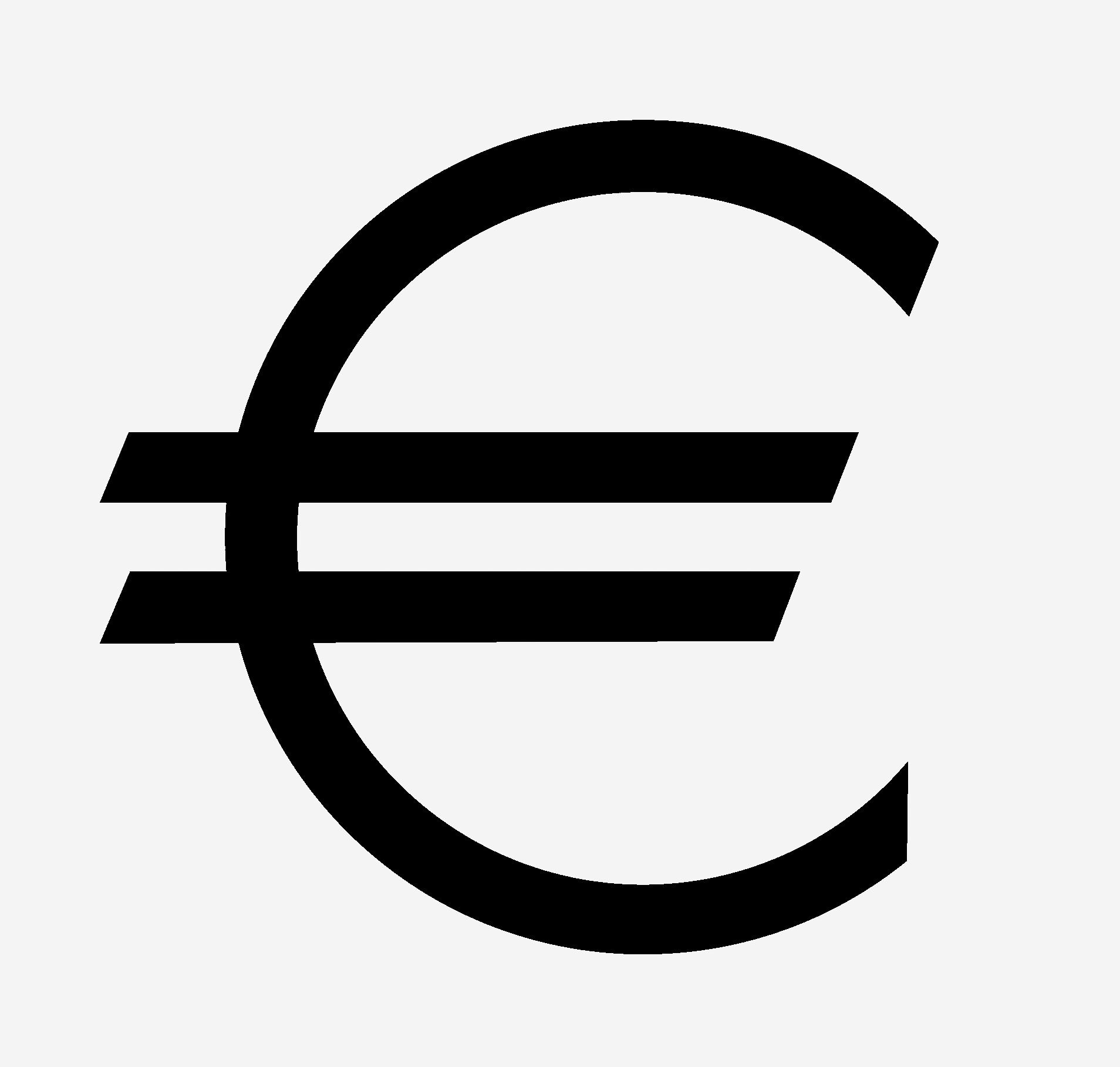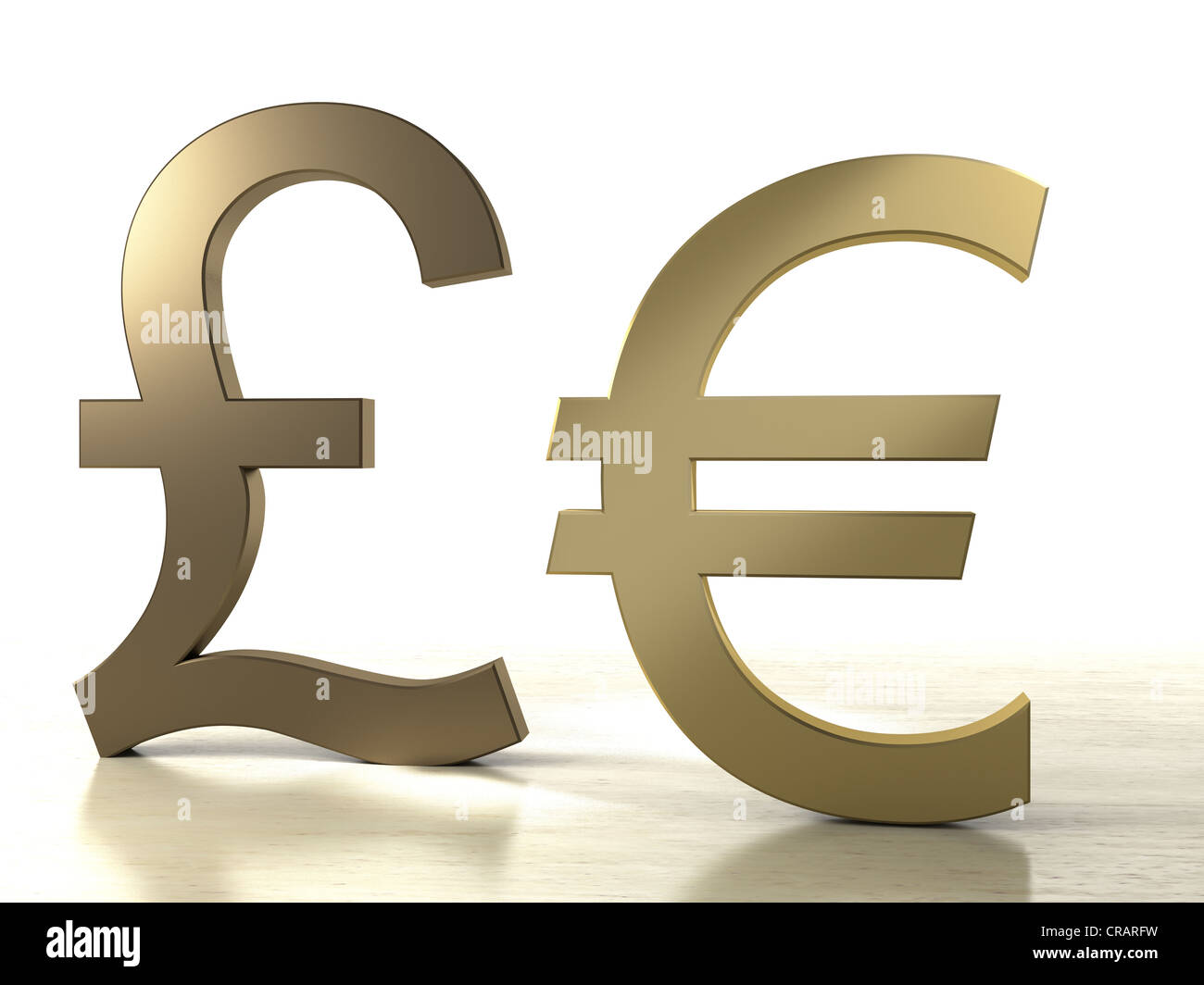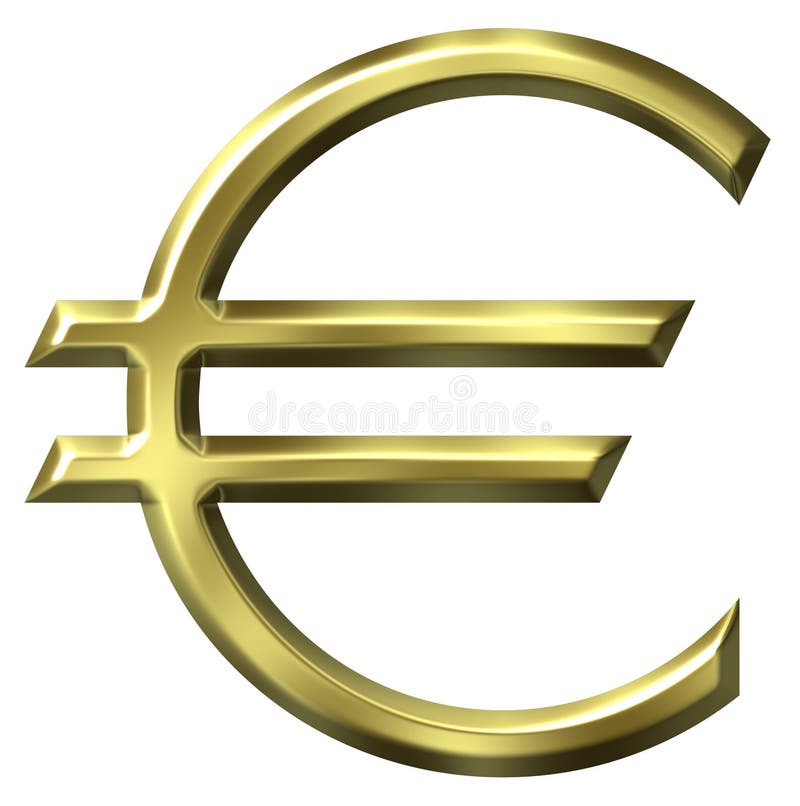The little mark that stands for the euro, that particular bit of currency, is a pretty important sight across many parts of Europe and, too, other places. It’s the official sign for the money used by a large group of countries, and it helps everyone know what price they are looking at, or what amount of money they are dealing with. Basically, this little sign makes financial things a whole lot clearer for millions of people every single day.
You see, this special mark, the one that looks a bit like a capital 'C' with two lines across it, actually came into public view quite some time ago. The folks at the European Commission, a rather significant group, showed it off to everyone on December 12, 1996. So, it's not a brand-new thing, but it has been around for a good while, helping people figure out their finances across a whole continent.
This sign, the euro symbol, really does represent the money itself, the euro, which is the standard cash for the area known as the eurozone within the European Union. It helps people in their daily lives, whether they are buying groceries, paying for a train ticket, or just checking their bank balance. It’s a bit like a universal shorthand for money, making things easier for everyone who uses it, you know, across a wide stretch of land.
- Are Adam Sandler And Jon Stewart Friends
- Michael Madsen Net Worth
- Tobias Dorzon Football
- Nordstrom Rack Return Policy
- Adam Schiff Family Tree
Table of Contents
- What Exactly Is the Symbol for Euro?
- When Did We First See the Euro Symbol?
- Where Does the Euro Symbol Get Used?
- How Do You Get That Euro Symbol on Your Screen?
- A Little Detail About the Euro Symbol
What Exactly Is the Symbol for Euro?
The euro sign, that familiar little mark (€), is what people use for the euro, which is the main money for the group of countries that share this currency, often called the eurozone. It’s a bit like a special badge for this particular money, making it simple to spot in any written material. So, when you see that specific mark, you immediately know you are looking at amounts of euro money.
This symbol, the one that looks like a "C" with lines, truly serves as the official way to show the euro. This currency, as a matter of fact, is the standard form of cash for the eurozone within the larger European Union. It helps keep things neat and tidy when people are writing down prices or talking about financial figures. It’s a simple, clear way to communicate money values across a wide area.
It's interesting to note that this particular symbol, the one for the euro, is available in many different places where you might need to type. For instance, many keyboards, especially those found in European countries, actually have a specific button just for this mark. This makes it pretty easy for people to put it into their documents or messages without much fuss, which is rather handy for everyday use.
- Mcdonalds Mascots
- Bill Oreilly New Wife
- Who Is Emily Compagno Married To Right Now
- Lillian Phillips Bio
- Rob Dyrdek Family
The Visual Story of the Euro Symbol
The euro symbol itself, that distinct mark €, has a story behind its appearance. According to the official website of the European Union, the way it looks is actually based on an old Greek letter. It takes its shape, in a way, from the Greek letter epsilon, which is a rather neat bit of history for a money mark. This connection gives the symbol a sense of tradition and depth, linking it back to ancient cultures.
This visual connection is quite thoughtful, you know, as it ties the modern currency to a long history of writing and symbols. The design was chosen to represent a few key ideas, like Europe itself and stability, with those two horizontal lines suggesting the stability of the euro. It's not just a random scribble, but a carefully thought-out picture that carries meaning for the money it stands for.
When Did We First See the Euro Symbol?
People first got a look at the design for the euro symbol on December 12, 1996. This was when the European Commission, the body that kind of runs things for the European Union, showed it to the public. It was a pretty big moment for what would become the shared money for many nations, marking a clear step towards its introduction. So, it was a specific day when this important little mark made its debut.
The reveal of this symbol was a part of the bigger plan for the euro itself. It wasn't just a sudden appearance; rather, it was a carefully planned announcement that let everyone know what the future money would look like. This event, in some respects, set the stage for the widespread use of the euro and its unique mark, helping people get used to seeing it before the money even came out.
This date, December 12, 1996, is a pretty important one in the story of the euro. It’s when the visual identity of this major currency was set for the world to see. It showed that the plans for a unified European money were moving forward, and that this new cash would have its own clear and simple way to be identified. So, that specific day was a key moment in the journey of the euro symbol.
Where Does the Euro Symbol Get Used?
The euro symbol (€) stands for the euro currency, often abbreviated as EUR, which is put to use by twenty different countries that are part of the European Union. This means a good chunk of Europe uses this specific money, and so, the symbol is seen everywhere in these places. It’s the mark you’ll spot on price tags, bills, and pretty much any financial document in these nations.
Beyond the twenty member states of the European Union, the euro is also the official money for a number of other places. For instance, countries like Andorra, Montenegro, Kosovo, and San Marino also use the euro, even though they aren't formal members of the EU. This means the symbol's reach is actually quite a bit wider than just the main European Union countries, which is interesting.
So, if you’re looking at prices or money amounts in any of these places, you’re very likely to see that familiar euro symbol. It’s a common sight, making it easy for people to understand the value of things, whether they are buying a coffee or looking at a house price. The symbol helps make financial communication smooth across a broad area, which is really quite useful.
Beyond the Usual Places - The Euro Symbol's Reach
It’s kind of neat how the euro symbol extends its use beyond just the European Union. As mentioned, places like Andorra, Montenegro, and Kosovo have taken on the euro as their own money. This means the little mark for the euro is a common sight in these spots too, even though they have their own distinct governments and ways of doing things. It shows how widely accepted this particular money has become, in a way.
The fact that these non-EU areas use the euro, and thus its symbol, means that the currency has a significant presence across the continent, and even a little beyond. It simplifies things for travelers and businesses alike, as they don't have to worry about exchanging money or learning a new symbol when they visit these places. It’s a bit like a common language for money, making transactions simpler for many people.
This widespread adoption, you know, makes the euro symbol a truly international sign, at least within Europe and its close neighbors. It’s not just a mark for a political union, but a practical tool for daily life in a variety of independent places. This really does highlight the importance and convenience of having a single, easily recognizable money mark for so many different folks.
How Do You Get That Euro Symbol on Your Screen?
If you need to put the euro symbol (€) into a document, a note, a message, or any text field on your computer, phone, or tablet, there are a few simple ways to do it. It’s actually pretty straightforward once you know the tricks. You don't need to be a computer whiz to get this little money mark onto your screen, which is quite helpful for anyone who uses digital devices for writing.
For instance, one of the easiest ways is just to copy and paste the euro symbol instantly. You can find it online, copy it, and then put it right where you need it. This method is super quick and works on almost any device, so it’s a good go-to if you’re in a hurry. It means you don't have to remember any special key combinations or codes, which is really convenient.
Also, if you have a keyboard, especially one made for European users, there's a good chance it has a dedicated key for the euro symbol. This makes typing it a breeze, as you just press one button. For other keyboards, there are often "Alt codes" or other key combinations you can use. So, there are many paths to getting that euro mark into your writing, depending on what kind of device you are using.
Typing the Euro Symbol - Simple Ways
To get the euro symbol onto your computer or phone, there are indeed a few methods that make it quite easy. One common way, particularly on desktop computers, involves using what are called "Alt codes." These are special number combinations you type while holding down the Alt key, and they produce specific symbols. It’s a bit like a secret handshake with your keyboard to get the symbol you want, you know.
For example, you might press Alt and then type a certain sequence of numbers on your number pad to make the euro symbol appear. Different computer systems might have slightly different codes, but they are usually easy to look up. This method is pretty reliable for getting the symbol into almost any document or text area, which is very useful for professional or personal writing.
On mobile phones and tablets, getting the euro symbol is often even simpler. Usually, if you switch to the number or symbol keyboard, you'll find the euro symbol right there, ready to be tapped. It's usually grouped with other currency signs, making it quick to locate. So, whether you are on a big computer or a small phone, putting the euro mark into your text is actually pretty easy to do.
The Euro Symbol's Digital Fingerprint
Every character you see on a computer screen, including the euro symbol, has a unique digital "fingerprint" called a Unicode. For the euro symbol, its Unicode is U+20AC. This is a standard code that computers all over the world recognize, making sure that when you type or view the euro symbol, it looks the same everywhere. It's a bit like a universal address for that particular character, you know.
Knowing the Unicode for the euro symbol can be helpful for people who work with web design or development. They might also use what are called HTML codes to display the symbol on websites. These codes, like `€` or `€`, tell a web browser to show the euro symbol correctly. So, if you're building a website and need to show prices in euro, these codes are what you would use to make sure it looks right.
This digital standardization means that no matter where you are, or what device you are using, the euro symbol will appear as it should. It helps keep things consistent across all sorts of digital content, from simple notes to complex web pages. It’s a small detail, but it’s actually quite important for making sure money amounts are clear and correct everywhere you see them online or in digital documents.
A Little Detail About the Euro Symbol
When you are writing out an amount of money using the euro symbol, there's a common way to do it that most people follow. The euro sign generally comes before the actual number. So, if you're talking about ten euro, you would typically write it like this: €10. There's also usually no space in between the symbol and the number, which keeps things looking neat and tidy. It’s a small rule, but it helps keep things consistent.
This placement is a bit different from how some other currencies are written, where the symbol might come after the number. But for the euro, putting the symbol first is the standard practice. It helps everyone quickly see that the number that follows is an amount of euro money. So, when you are putting down prices or amounts, remember that the little euro mark usually leads the way.
Following this simple rule helps make sure your writing is clear and easy for others to read, especially when it comes to money. It's a widely accepted way of doing things, so sticking to it means you're communicating effectively. It’s just a little detail, but it helps keep financial figures consistent and understandable across all the places where the euro is used, which is pretty important.
Related Resources:
Detail Author:
- Name : Jannie Koepp
- Username : ewald.larson
- Email : marianna11@yahoo.com
- Birthdate : 1973-04-02
- Address : 11336 Ephraim Forges Apt. 188 Gerardview, SC 84331-4219
- Phone : (413) 253-6701
- Company : Borer-Fay
- Job : Social Media Marketing Manager
- Bio : Doloremque ad ratione voluptatibus non fugiat nisi eum. Omnis aut facere a. Repellendus soluta eaque ut consectetur aut hic quibusdam officia. Aperiam molestiae ut voluptates.
Socials
facebook:
- url : https://facebook.com/conrad_senger
- username : conrad_senger
- bio : Vel possimus et non et dolores ut.
- followers : 3019
- following : 739
tiktok:
- url : https://tiktok.com/@conrad.senger
- username : conrad.senger
- bio : Est aspernatur voluptates consequuntur nobis. Quam atque tenetur inventore.
- followers : 1064
- following : 1157
twitter:
- url : https://twitter.com/csenger
- username : csenger
- bio : Corrupti nobis qui ut soluta et doloribus. Nulla quisquam adipisci in velit in dicta. Qui in numquam omnis vel vitae blanditiis. Eaque omnis aut eum aut.
- followers : 2900
- following : 991
instagram:
- url : https://instagram.com/conradsenger
- username : conradsenger
- bio : Officia quasi qui sit suscipit ipsam. Non fuga modi et quisquam.
- followers : 6761
- following : 1775


